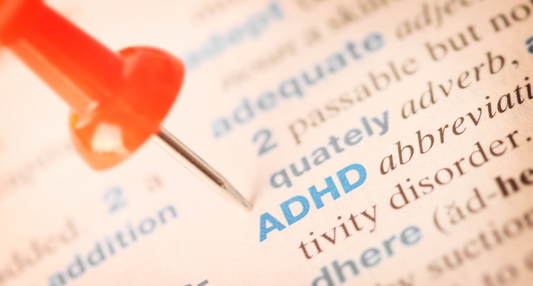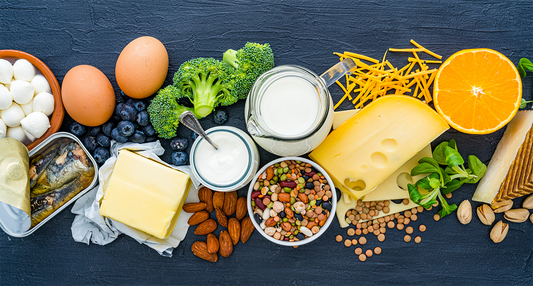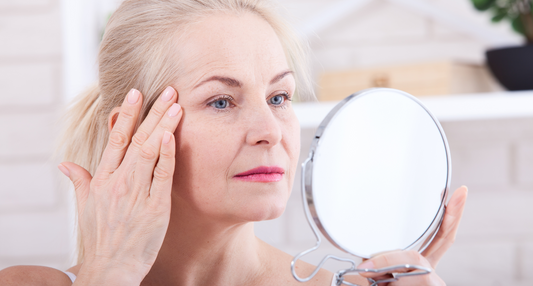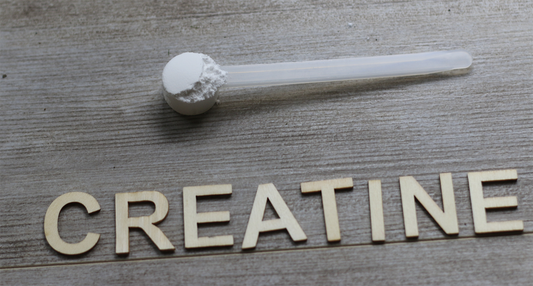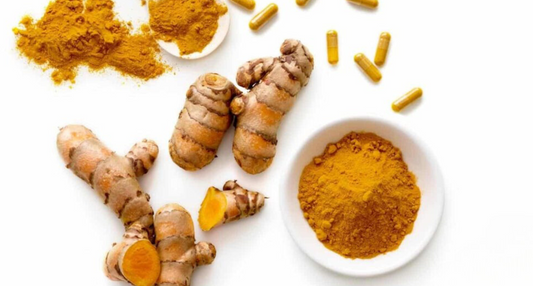10 Tips To Fight Menopausal Belly Fat (That Really Work)
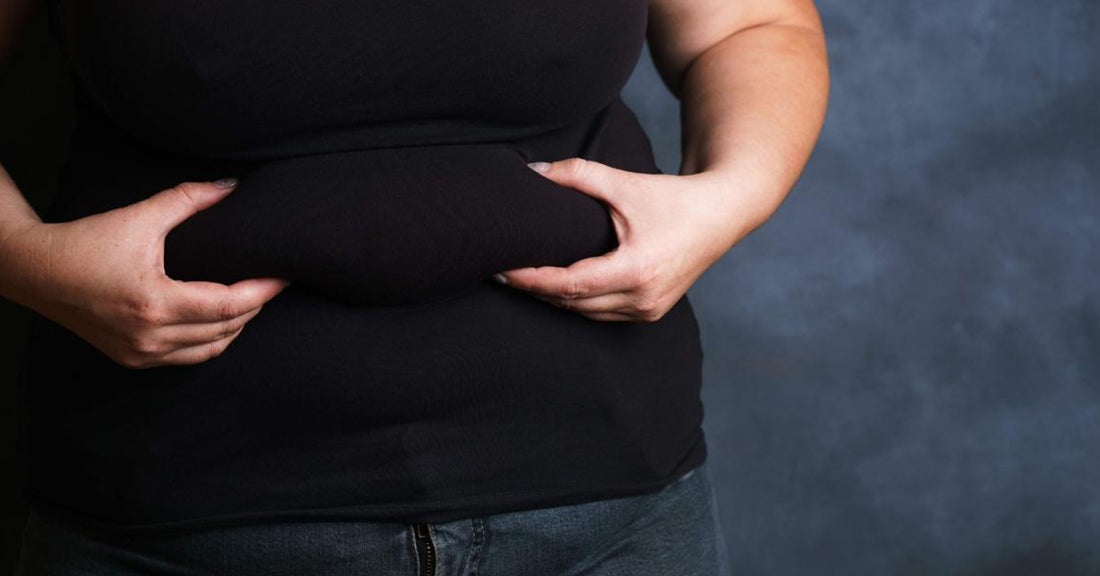
Share
With all the changes in our bodies during the menopause transition, there is one that raises so many questions, frustrations and self-doubt: the excessive adipose tissue that often develops around the midsection at the onset of perimenopause and menopause, also known as belly fat.
First let’s break down some myths and facts about fat. We have such a fat-phobic culture in many ways thanks to the fat-free food phase post-1970’s, a rise in obesity that led to many unhealthy diet crazes, disordered eating, and fear of our own bodies. The majority of women in menopause today grew up in households where fat-free products and diets were the rage. Many of those products were full of sugar and other fillers contributing to a steady rise in visceral fat and other metabolic disorders.
What Is Belly Fat? Why Does This Occur For Women In Menopause? What Can Be Done?
As estrogen levels begin to fluctuate, you start to experience signs of menopause, such as hot flashes, night sweats, and mood changes, as well as noticing that your pants may be getting a bit tighter.
As estrogen levels drop, we experience a rise of active testosterone, and fat distribution begins to shift from the hips and thighs to the abdomen1 in the form of visceral, or “belly fat.” Testosterone is the cause of this new belly fat phenomenon.2
Belly fat accumulation is dangerous. Studies have shown that increased visceral fat raises the risk of heart disease,3 diabetes,4 dementia,5 breast cancer,6 and perhaps, even early sudden death.7
The Facts About Fat
Adipose tissue (fat) is connective material that is made up of adipocytes (cells that store fat) and stores energy in the form of lipids, or fat. Adipose fat helps us survive, protects our organs, and allows us to move through our day with protection from excess heat or cold. Adipose tissue also functions as an endocrine organ producing hormones like leptin and estrogen.
The Two Main Types Of Adipose Fat
- Subcutaneous fat is the fat underneath our skin, is throughout the body, and often pinchable. It is usually more equally distributed, can be adapted through lifestyle modifications and in excess can lead to other health issues as well.
- Visceral fat, aka belly fat, is the adipose tissue internal to and surrounding vital organs including the liver, stomach, and intestines. To some degree we need visceral fat to support those organs, however too much can lead to insulin resistance, increases in inflammation and heightened risk of metabolic syndromes, diabetes, hypertension, and cardiovascular disease. Women experiencing menopause and postmenopause often fight with this type of belly fat the most 14, 15.
There is a close relationship between higher amounts of visceral fat, insulin resistance and inflammation and for women entering perimenopause with changes in hormones it is important to transition with good information and tools in your menopause toolbox.
The good news is, visceral fat responds to lifestyle changes!
Top Ten Tips To Prevent And/Or Lose Visceral Fat
1. Be Informed
Approach your perimenopause and menopause transition armed with information about your own body. Take your hip to waist ratio16 measurement. Just measure your waist at the smallest point – usually at the naval or just above it, then measure your hips at the widest, largest part. Now divide your waist measurement by your hip measurement (Waist Measurement ÷ Hip Measurement). For women: 0.85 or lower is an indicator that you are at a lower risk for developing certain diseases. Once you have a baseline measurement, you can track and talk with your provider about changes you notice.
2. Exercise
As you transition into menopause, exercise will support good bone and joint health, produce endorphins, promote good sleep AND support good lean body mass to fat (visceral fat) mass ratios. You need a good balance of vigorous cardiovascular and strength training 20.
3. Anti-Inflammatory Nutrition
A vibrant and strong diet full of complex carbohydrates, lean proteins, and healthy fats (nuts, seeds, avocados, olive/avocado oils, fatty fish etc) will lower inflammation, support hormone production and improve your overall health. Cut down on sugars, consuming no more than 25 grams of added sugar per day. Increase your fiber intake to at least 25 grams or more per day. Eat more protein. Studies have shown that people who eat at least 1 – 1.5 g of protein for every kg of lean body mass have less belly fat than people who eat less. Try increasing your intake of high protein foods such as whole eggs, fish, legumes, nuts, meat, and dairy products.8 We highly recommend reading through our evidence based nutrition materials at the Galveston Diet. If you are unsure of your inflammation levels, check your Daily Inflammation Score here. This quiz will help you determine your relative degree of inflammation for the past 24 hours.
4. Balance Your Stress
Find new tools, skills, and support to help you with family, work, and your health. What might have worked in your 20-30s might not fully support the life transitions that come with menopause ages and stages. Find new ways to bring moments of joy, peace, and calm in your day. Small walks, fresh air, journaling, using a meditation app, and sessions with a counselor or therapist can really help.
5. Find A Community
Part of adapting to menopause transitions is finding support from not only your healthcare provider, but also other women that are in it with you. This could be online, friends, or here. Learning from others on how they are supporting their bodies during all these changes is vital to your health
6. Sleep
The best defense and tool to reduce belly fat is having a good sleep routine. Look at your sleep patterns, quality of sleep, and overall sleep hygiene (room temperature, noise, and comfort of clothing and bedding). Many women in perimenopause and beyond experience fluctuations in body temperature resulting in night sweats, making sleep almost impossible. Making nutritional and lifestyle changes, and consulting your healthcare provider to discuss other treatment options during this transition can help with sleep.
7. Get Support Through Supplements
Some great studies on key supplements have emerged helping women through their menopause transition and with visceral fat loss. The bottom line is a good source of omega-3 fish oil 18, probiotics19, and a fiber 20 supplement can help a great deal.
Studies show that people who consume more soluble fiber have a greater variety of bacteria and better health outcomes.9 Furthermore, a new study found that individuals with a varied gut microbiome had a lower chance of belly fat.10 Probiotics are healthy bacteria found in food and supplements that support gut health. Studies have shown that probiotic supplementation can substantially reduce belly fat. In another study, women who took a probiotic supplement lost 50% more weight than women who took a placebo.12 Foods rich in probiotics include yogurt, sauerkraut, miso soup, soft cheeses, kefir, sourdough bread, acidophilus milk, and sour pickles.11 Borage oil is prized for its high concentration of gamma-linoleic acid (GLA). This fatty acid is believed to aid in the reduction of inflammation linked to a variety of diseases. In one study, there was a significant decrease in waist to hip ratio in menopausal participants who took a borage oil supplement versus placebo.13
8. Understand Your Own Hormone Changes & Needs
You might be a great candidate for hormone replacement therapy (HRT). Educate yourself and work with your healthcare provider to identify your hormone needs, changes and the types of support available. We have come a long way in understanding estrogen and progesterone changes and needs. Do not be afraid to start this conversation and get the care for your body.
9. Cut Out Smoking
When reduced and cut out, the one health behavior change can lead to significant changes in visceral fat loss and overall decreased risk of cardiovascular disease, stroke, and other metabolic disorders.21
10. Consider Intermittent Fasting
There is a lot of information (and misinformation) about IF. More research is emerging on how IF can impact women in menopause transition. It is not a panacea and it is not for everyone, but it is worth exploring as a mechanism to reduce visceral fat22 as well as to provide additional health benefits.
Sources:
- https://journals.lww.com/menopausejournal/Abstract/1995/02010/Age_at_Menopause_in_Women_Participating_in_the.5.aspx
- https://www.ncbi.nlm.nih.gov/pmc/articles/PMC2866448/
- https://www.ncbi.nlm.nih.gov/pmc/articles/PMC5619737/
- https://www.sciencedirect.com/science/article/abs/pii/S0939475306001505
- https://www.cambridge.org/core/journals/british-journal-of-nutrition/article/relationship-between-adiposity-and-cognitive-function-in-a-large-communitydwelling-population-data-from-the-trinity-ulster-department-of-agriculture-tuda-ageing-cohort-study/92B48D9F2754CE425A88482506CAAED6
- https://acsjournals.onlinelibrary.wiley.com/doi/abs/10.1002/1097-0142(19940715)74:2%3C632::AID-CNCR2820740215%3E3.0.CO;2-T
- https://www.ncbi.nlm.nih.gov/pmc/articles/PMC5478802/
- https://pubmed.ncbi.nlm.nih.gov/25733478/
- https://pubmed.ncbi.nlm.nih.gov/17472627/
- https://pubmed.ncbi.nlm.nih.gov/27666579/
- https://pubmed.ncbi.nlm.nih.gov/32615727/
- https://pubmed.ncbi.nlm.nih.gov/24299712/
- https://journals.lww.com/menopausejournal/Abstract/9000/Is_there_a_beneficial_effect_of_gamma_linolenic.97008.aspx
- https://doi.org/10.4103/ijmr.IJMR_1910_18
- https://doi.org/10.1016/j.clnu.2022.08.008
- https://doi.org/10.1093/eurheartj/ehm026
- https://doi.org/10.3945/jn.109.106641
- https://doi.org/10.1186/1550-2783-7-31
- https://doi.org/10.1089/jmf.2017.3937
- https://doi.org/10.1038/oby.2011.171
- https://doi.org/10.1089/whr.2021.0119
- https://pubmed.ncbi.nlm.nih.gov/23171320/
- https://doi.org/10.1038/s41598-021-94189-2
- https://doi.org/10.1038/oby.2007.200
- https://doi.org/10.1093/jn/133.8.2655




